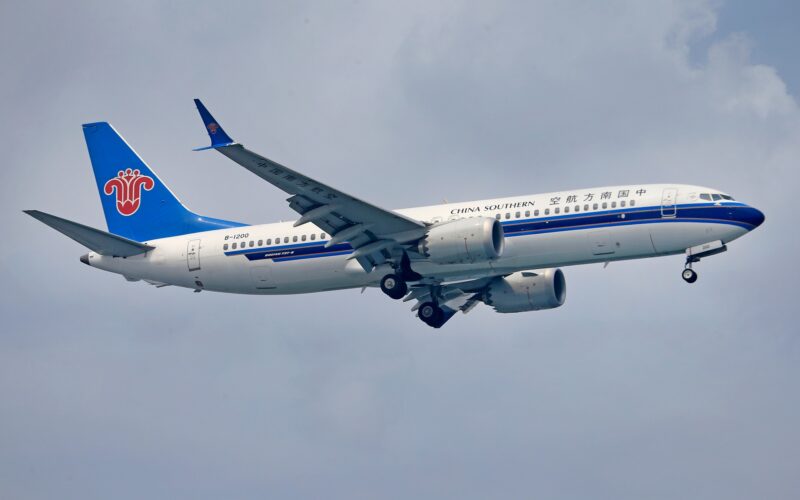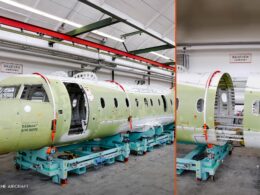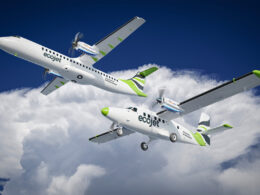On March 10, 2019, an Ethiopian Airlines Boeing 737 MAX, registered as ET-AVJ, plunged to the ground shortly after taking off from Addis Ababa Bole International Airport in Ethiopia, marking the second fatal crash of the type in the span of just a few months.
By the following day, the Civil Aviation Administration of China (CAAC) had issued a notice “requiring domestic airlines to suspend the commercial operations of Boeing 737-8 aircraft by 6 pm based on the management principle of zero tolerance to potential safety hazards and strict control of safety risks, in order to guarantee civil aviation flight safety in China.”
“Restart of Boeing 737-8 commercial operations will be notified after CAAC contacts FAA and Boeing and confirms effective measures are available to guarantee flight safety,” the notice concluded.
Almost three years later, the first Boeing 737 MAX flights began to shuttle passengers domestically in the country, yet the CAAC remained silent. On January 13, 2023, a China Southern Airlines departed from Guangzhou Baiyun International Airport (CAN) to Zhengzhou Xinzheng International Airport (CGO). The aircraft, registered as B-1206, was the first to fly passengers since the CAAC’s announcement in March 2019.
Several airlines have since followed in the footsteps of China Southern Airlines, including Air China, Hainan Airlines and its subsidiary Fuzhou Airlines, Lucky Air, Shandong Airlines, and Shanghai Airlines. In total, 25 Boeing 737 MAX aircraft, all -8s, are currently active in China and operated by seven airlines in the country, according to ch-aviation.com data.
Quick decision by the CAAC
The decision to ground the Boeing 737 MAX in China was made within 24 hours after the Ethiopian Airlines accident.
At the time, tensions surrounding the aircraft type were running high. Boeing delivered the first 737 MAX to Malindo Air in May 2017. Less than a year later, in October 2018, the aircraft type saw its first fatal crash when a Lion Air 737 MAX, registered as PK-LQP and operating flight JT610, dove straight into the Java Sea off the coast of Jakarta, Indonesia, shortly after taking off from Soekarno–Hatta International Airport (CGK).
After the Lion Air incident, and prior to the Ethiopian crash, Boeing released a flight crew operating manual (FCOM), and the United States (US) Federal Aviation Administration (FAA) issued an emergency airworthiness directive (AD) to help pilots deal with uncommanded stabilizer trim movement. In the two fatal crashes, the uncommanded stabilizer trim movement was carried out by the now-infamous Maneuvering Characteristics Augmentation System (MCAS). MCAS was, according to Boeing’s website, a solution put in place by the manufacturer to provide “consistent airplane handling characteristics in a very specific set of unusual flight conditions”.
In total, the two crashes claimed the lives of 346 people.
Initially, the system relied on a single Angle of Attack (AoA) sensor to detect whether the aircraft was flying at a higher-than-normal angle under manual flight conditions. As such, with the sensor feeding faulty information, the 737 MAX’s nose was repeatedly trimmed down during both crashes by the MCAS.
Boeing updated the MCAS to not only rely on both AoA sensors and to act if both agree, but to also prevent the MCAS from repeatedly triggering and overriding the actions of the pilots. That and other concessions, including the FAA having a tighter grip on the aircraft certification process as well as making changes to the Organization Designation Authorization (ODA), as required by the Aircraft Certification, Safety, and Accountability Act (ACSAA), resulted in the FAA ungrounding the 737 MAX in November 2020.
Many other authorities, including the European Union Aviation Safety Agency (EASA), followed suit, yet China and Russia remained outliers. Sanctions imposed on Russia following its full-scale invasion of Ukraine meant that the country was unable to buy new air frames and the 737 MAX has not been operated by Russian airlines since. But the situation in China has been different. Previously, only S7 Airlines had a pair of 737 MAXs in its fleet.
Following its quick decision to ground the type on March 11, 2019, communication from the CAAC has been scarce. In May 2019, the authority issued a release, outlining “three principles for resuming the operation of Boeing 737 MAX-8”. The list includes the re-examination of the aircraft’s airworthiness and the necessary aircraft and pilot training adjustments/modifications, as well as the requirement that the safety problems found during the accident investigations be resolved.
In March 2021, the CAAC announced that it had participated in a press conference organized by the State Council Information Office, examining the air network’s status and development in China, “and Boeing 737 MAX’s returning to service”.
In September 2022, the CAAC announced that it had met with representatives from Boeing in Zhoushan, China, “evaluating the operation of 737MAX” and “to carry out a comprehensive evaluation of the aircraft type-based training standards for the improved 737 planes.” Zhoushan is also the location of Boeing’s Completion and Delivery Center (C&DC) for the 737 MAX, where local employees install interiors and paint liveries prior to delivery of the aircraft.
“CAAC will release the second revision of the Aircraft Evaluation Report on Boeing 737 Planes after the problems that have been identified in the meeting are resolved, indicating the process for re-introducing 737MAX planes is nearing conclusion,” the statement continued.
Sudden return of the 737 MAX
On January 12, 2023, the day before the China Southern Airlines 737 MAX carried passengers from CAN to CGO, the CAAC published a statement on its Chinese website stating that the regulator’s Deputy Administrator Hu Zhenjiang had visited staff at Beijing Daxing International Airport (PKX).
The announcement stated that Zhenjiang went to PKX to “pay respects to the ground service and security checks that are on the front line of Spring Festival transportation security”.
Another announcement made on February 28, 2023, read that “the Yunnan Regulatory Bureau convened three transportation airlines involved in the supplementary certification of B737-8 aircraft in their jurisdiction and held this operation work exchange seminar”.
The CAAC website also indicated that the three airlines based in Yunnan, a Chinese province in the southwestern part of the country, reported on the work progress of the resumption of service of the 737 MAX, while the administration “notified the specific risks of MAX aircraft operation, and required all airlines in the jurisdiction to make a good assessment in terms of training and risk control, and solidly promote safe operation”.
“In the next step, the Yunnan Regulatory Bureau will strictly review and verify the standards, and conduct review and verification in terms of aircraft modification and personnel qualifications to ensure that the certification work related to the resumption of commercial operations is stable and orderly,” the CAAC concluded.
Yunnan province is home to Lucky Air, which flew a 737 MAX-8 commercially for the first time since the grounding on February 25, 2023. The flight took place between Kunming Changshui International Airport (KMG) and Fuzhou Changle International Airport (FOC). The province also hosts Kunming Airlines, which has five aircraft of the type in its fleet (two stored, three not taken up (ntu) and three yet to be delivered), and China Eastern Yunnan Airlines, a subsidiary of China Eastern Airlines, which, per planespotters.net data, has six 737 MAX on order and three stored.
So far in 2023, Boeing has delivered 64 aircraft that are actively flying with 16 different airlines, according to ch-aviation.com data. None were taken up by a Chinese carrier.
“[…] our job one right now is helping our airlines in China return airplanes to service. There’s two airlines that have moved out,” commented Brian West, the Chief Financial Officer (CFO) and Executive Vice President of Finance of Boeing, during the Cowen Aerospace/Defense & Industrials Conference on February 15, 2023.
“There’s several that are in the air, generating revenue, but there’s about 90 that still have to return to service and we stand ready to help our customers in that market just as soon as they’re ready and we will follow their cue,” he continued.
However, West also noted that Boeing did have to remarket some of the 737 MAX aircraft, even if the manufacturer’s “intention is to support our critical customers in China and objective would be get them to go back mostly to where they originally were supposed to go”. Three 737 MAXs, registered PS-GPL, PS-GPM, and PS-GPN according to planespotters.net data, originally destined for Kunming Airlines were remarketed to Brazil’s GOL Transportes Aéreos. Three more 737 MAXs, N17285, N57286, and N47288, were remarketed from Lucky Air to United Airlines.
AeroTime approached Boeing for comment.









